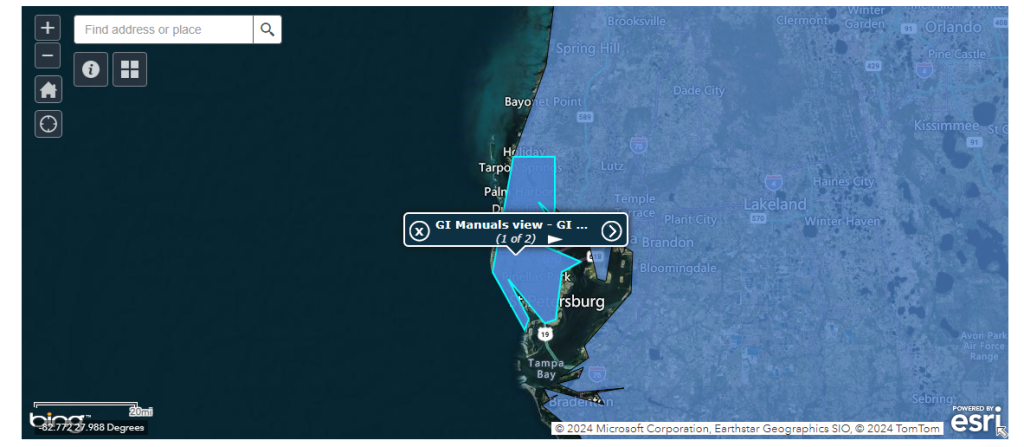Last year, results from the Water Environment Federation’s (WEF; Alexandria, Virginia) third National Municipal Separate Storm Sewer System (MS4) Needs Assessment Survey indicated that nearly half of all permitted U.S. stormwater managers required more actionable information regarding the selection, design, efficacy, and life-cycle costs of green infrastructure.
WEF’s Stormwater Community is working on a first-of-its-kind resource in an effort to improve access to useful technical guidance on green infrastructure and watershed-based climate change resilience strategies. Once released, this web-based data clearinghouse will connect users to authoritative, expert-vetted technical resources applicable to their specific region and stormwater management goals.
‘Georeferenced’ Technical Resources
Much of the challenge associated with identifying actionable green infrastructure technical guidance comes down to geography. Compared to conventional pumps and pipes, green infrastructure that works in one setting may not function as intended in another. Alexander Miller, Water Resources Engineer for HDR (Omaha, Nebraska) and Second Vice Chair of the WEF Stormwater Community who is spearheading the development of the resource clearinghouse, said that the difference complicates traditional knowledge-sharing efforts within the stormwater sector.

“Unlike gray infrastructure, which has a more cut-and-paste approach to design — like sizing a concrete pipe for a certain flow rate — green infrastructure design and planning needs a lot of site context to be successful,” Miller said. “Things such as which vegetation to include and where, soil types, and meteorological input are all critical aspects and will necessitate a different type of solution for different climates and areas.”
For this reason, even technical guidance at the scope of U.S. states and regions may not be relevant enough to apply to every community within that jurisdiction.
Working alongside both public- and private-sector partners, members of the WEF Stormwater Community’s Green Infrastructure Focus Group have spent several months soliciting technical resources from across the U.S. stormwater sector. These guidance documents include, for example, official green-infrastructure design specifications at the city, county, and state levels; calculations for estimating performance efficiencies or quantifying co-benefits; research papers on green infrastructure effectiveness for specific soil types; landscape and planting handbooks; resilience design plans; and operations and maintenance manuals.
Once they have each resource in hand, stormwater experts examine each resource’s specific recommendations and “georeference” them — a process that involves determining the extent of their applicability for different regions, which may transcend the original area for which the resource was developed. For example, a reference on designing bioretention ponds in St. Petersburg, Florida, might be applicable solely within the geographical contexts of that city. However, it also may provide useful insights throughout broader Pinellas County, or even across all communities in the region with similar soil types.
Miller envisions the centerpiece of the resource clearinghouse under development as an interactive U.S. map, where users can zoom into specific cities and counties and gather a set of reliable, peer-reviewed technical manuals to help them develop green infrastructure and resilience design plans. The site also will feature various other tools to help stormwater professionals make better-informed decisions.
“The ultimate goal here is for a professional to be able to click on a specific area and get a plethora of resources that they may not have known of,” Miller said.
Responding to Growing Information Needs
As green infrastructure continues to skyrocket in popularity among stormwater professionals worldwide, the need for locale-specific information on green infrastructure design and maintenance is growing rather than shrinking.
WEF’s first MS4 Needs Assessment Survey, conducted in 2018, found 39% of the survey’s 608 respondents identified informational or resource needs for green infrastructure as either a significant or very significant priority. The figure for the most recent survey, conducted in 2022, rose to 46% among its 644 respondents. Meanwhile, a significant portion of MS4 permittees — 18% of respondents in the latest survey — describe their green infrastructure programs as the least-developed aspects of their broader stormwater management portfolios, underscoring the need for technical guidance.

“Stormwater professionals from across the U.S. continue to voice the need for design information that pertains to their specific circumstances, but the site-specific nature of green infrastructure means many communities feel the need to perform their own time- and cost-intensive studies to determine what will work for them. Otherwise, green infrastructure may seem risky compared to gray infrastructure,” said Lisa Deason, Stormwater, Collection Systems, and Conveyance Practice Leader at WEF. “The web-based resource WEF is creating responds to this specific need, and hopefully will arm users with the actionable evidence they need to de-risk nature-based approaches for resilience and stormwater management.”
The WEF Stormwater Community’s Green Infrastructure and Resilience Focus Groups still are seeking documents, manuals, and other technical resources from throughout the U.S. to bolster the web-based tool’s offerings. Miller says the design team intends to gather at least 100 georeferenced resources before the site launches.
To contribute to this effort, please send web links to official or academic resources on green infrastructure and resilience strategies to Lisa Deason at ldeason@wef.org.
Top image courtesy of AC Works Co, Ltd./Pixabay

ABOUT THE AUTHOR
Justin Jacques is editor of Stormwater Report and a staff member of the Water Environment Federation (WEF). In addition to writing for WEF’s online publications, he also contributes to Water Environment & Technology magazine. Contact him at jjacques@wef.org.





